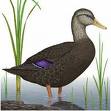
Scientists from the U.S. Geological Survey (USGA) gave conference attendees at the first conference on computational sustainability an idea of what they’re up against when they model their data. Ken Williams, Natural Resources Analysis and Decision Making Quantitative biologist, said “we never know for certain what’s going on in whole system.” There are environmental conditions such as seasonal changes, temperature variations, that may or not be directional, which may be indicative of climate change. These factors may or may not be observed. They also must take into account management actions, usually at regular intervals, for example water release that varies with time. These are guided by the team’s understanding of the resource and provides for adaptive learning. “Models are creative exercises in disregarding everything except for essential features, said Williams, “but what’s essential?”
Michael Runge of the Biological Resources Division, Patuxent Wildlife Research Center titled his talk, “Challenges in Framing the Problem: Just what are we trying to optimize anyway?” In his work with black ducks he must determine the right problem to frame in order to interact with regulators and solve management problems. For duck management, the objective is a sustainable harvest given caveats for achieving population goals given political constraints because Canada and the U.S. have different regulations. Taking into account factors results in 117,000 possible decisions. Moreover, the curse of harvest management has been that it’s based on single stocks of ducks, but the black duck flyways intermix with mallards.
The problems are very complex indeed.



Join the Discussion (0)
Become a Member or Sign In to Post a Comment